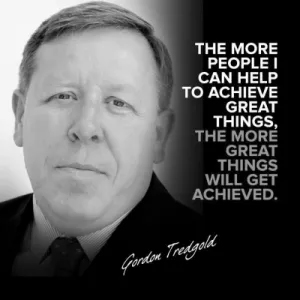
Usually it’s the squeaky wheel which gets the oil, but in business, we really need to look and see whether that is the best use of our resources. Too often we waste valuable time and energy on squeaky wheels that just don’t warrant it.
We need to understand how to best prioritise our time, energy and resources to get the best return on any investment.
When I am working with clients one of the first things I get them to do is to fill in a customer segmentation map, and the one I use looks like this.
We need to have this level of transparency into who our best customers are to ensure that we spend as much of our time with them as possible.
We will always have high maintenance customers, i.e. squeaky wheels, and we need to know whether or not they are high revenue or not, because if they are low revenue/high maintenance customers then we can invest too much time and energy with little to no chance of a positive return.
It’s amazing how few of my clients have previously taken this approach, even some of the large corporates that I have worked in have invested too much time an effort in their smaller customers, when that time would have been much more profitably spent with the larger customers.
At one client I worked with, when we implemented this approach we identified that 80% of our revenue came from our top 20% of customers. Even more interesting was that the 80% of customers who represented 20% of the venue accounted for almost 70% of the costs.
Which meant that if we were interested in increasing profitability, then we could look at reducing the bottom 80% and it could have a significant impact. In fact it would be very beneficial if we could send those expensive customers over to our competitors.
When we have these kinds of insights we can look to make decisions around which customers we nurture, which ones we try to grow and which ones we should look to go, without it we are just fumbling in the dark, giving the squeakiest wheel the majority of the oil.
In todays world we have so much data available to us that we need to leverage that data to understand who our best customers are, this will help us to significantly improve our performance and decision making.
At another client I worked for we have one customer who was constantly complaining about our turn around time for their bids, they would send us 5 bids a day, we were inundated and we had a 2 week turnaround time, so we were constantly working on bids for them.
One day they complained that they were going to the their businesses elsewhere if we didn’t improve our quality of service and I was summoned to present to their board our progress.
I spent a week going over the analysis, and what I discovered was that for 95% of the bids we received from them our quotes was on average $5000, and for the remaining 5% our bids averaged $100k, and that they were our highest revenue customer.
However, of the 95% of bids which we quoted $5000 they rejected over 90% of them, which meant that of the 90% bid work we did was rejected and it was rejected on low priced work, work that actually almost wouldn’t cover the costs of the beadwork itself – which we did for free. The costs of this work to us was actually 2 man years worth or $200k which were never going to get back.
As result of this we instituted a change to our estimation process, for things that we believed were small, we just said immediately that it would cost $5000 – it didn’t matter whether this was accurate or not as they rejected the majority of them, and for those that they accepted if it was slightly over we could cover from the $200k we had saved wasting time doing detailed estimates on work that never came.
When we presented to their board our findings they were less than sympathetic – squeaky wheels rarely are, but I made the commitment we would improve our performance in turning around our bids, so they were happy to take that oil.
Interestingly as I did the analysis it was also noticed that one of our other customers, 95% of the bids they requested resulted in them accepting and agree to the work, but as they were not our largest customer we didn’t show them much love.
Once we saw that they were actually a very good customer it allowed us to spend a little bit more time with them and help grow that account.
Just because a wheel doesn’t squeak doesn’t mean it should get no oil.
This is why transparency is so important to us in our day to day business operations, it allows us to make informed decisions.
If you’d like to know more email me at gordon@leadership-principles.com to arrange a free 30 minute strategy session.
